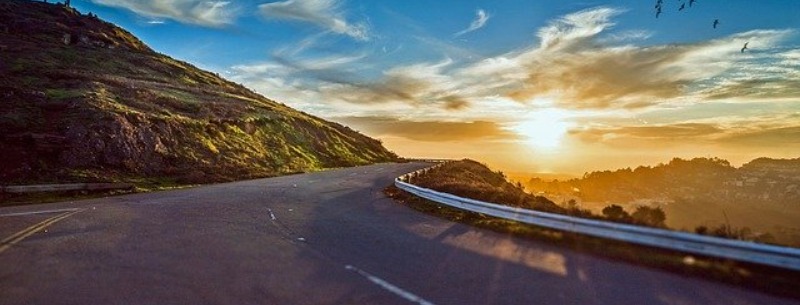Northern U.S. Road Trip
When planning a road trip in the United States, there are two popular options: the northern route and the southern route. We’ll be analyzing the northern route here, covering the states from Maine to Washington state. If a road trip is in your future, you can easily cover two different routes on your trip.
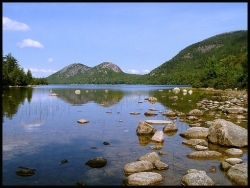 This route will cover the states of Maine, New Hampshire, Massachusetts, Vermont, Connecticut, Rhode Island, New York, New Jersey, Pennsylvania, Ohio, Illinois, Indiana, Wisconsin, Minnesota, South Dakota, North Dakota, Idaho, Michigan, Wyoming, Oregon, and Washington. It will also give you a good idea of what to expect when driving through these states, where to stop, and what to do.
This route will cover the states of Maine, New Hampshire, Massachusetts, Vermont, Connecticut, Rhode Island, New York, New Jersey, Pennsylvania, Ohio, Illinois, Indiana, Wisconsin, Minnesota, South Dakota, North Dakota, Idaho, Michigan, Wyoming, Oregon, and Washington. It will also give you a good idea of what to expect when driving through these states, where to stop, and what to do.
What can you Expect to See on this Route?
Sites on the Northern Road Trip Route
This route will wind through the backroad areas New England has to offer and shoot down to Manhattan and up New York state to see the Big Apple. From there, you’ll head upstate to see the Catskills and Adirondack region. Once over those mountains, you’ll proceed to Niagara Falls and across the cities of Erie, Pennsylvania, and over to Cleveland. This industrial area will lead to open prairie land until you reach the city of Chicago, which will turn back into prairie once leaving (very quickly, too!).
Wisconsin and Minnesota landscape on the southern side will be flat farmland, but to the north lies some excellent parks and boreal forests. Once across Minnesota, you will enter the barren state of South Dakota. This will progressively become the Badlands region, culminating with Badlands National Park. This arid region transforms into the dry plains region of eastern Wyoming.
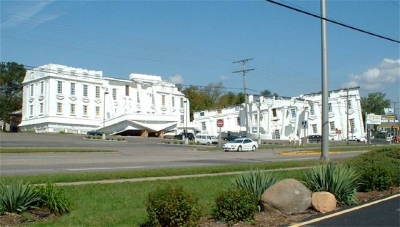
Half-way across Wyoming, you will reach the Continental Divide, which abruptly separates the state. As the interstate becomes less and less crowded, you’ll visit the national parks of Yellowstone and the Grand Tetons. A slow descent and over Hells Canyon in Idaho will bring you to Washington state. The high, mountainous region contains many national parks. This road will seemingly slant directly towards Seattle and the Washington shore. A trek down the Washington coast is an amazing journey, perfectly complimented with the high cliffs and waterfalls of Oregon.
Starting in Maine
The northernmost point, where your road trip begins (or ends!)
Maine and Washington are beautiful destinations to set your trip to. The rugged coastline of Maine is unlike the rest of the east coast, as you will quickly notice if you visit the rest of the eastern seaboard. Craggy shores lined with pines and firs make for dramatic New England scenery and a relaxing vacation spot.
Maine is famous for a number of old lighthouses…over 60 to be exact! These antique maritime navigational aids are easy to reach from Route 1. Just like the Pacific Coast Highway of California, Maine’s Route 1 provides outstanding views and the most direct route to all of the shoreside destinations of Maine. A few lighthouses you may recognize in particular. The massive Portland Head Light is the oldest in the United States (1791). At the top of the state, right on the US-Canada border, is West Quoddy Head Light. This striped red and white lighthouse is on the easternmost point of the United States.
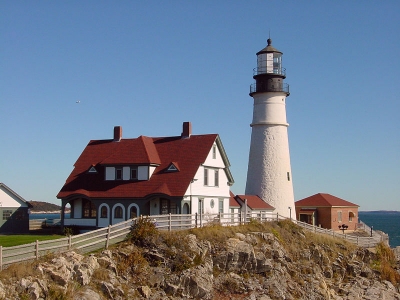
The weather in Maine is very cool, nearly all year long. Temperatures rarely crest over 80° due to the high latitude and closeness to the cool Atlantic air. Expect nighttime temperatures to take a drop. Bring sweatshirts with you everywhere towards the end of the day or on the open ocean.
Starting at Acadia National Park, you can take Route 1 south along the coast to see all of the small Maine towns like Bath, Boothbay Harbor, Kittery, the capital of Portland, Rockland, Freeport, Kennebunk, and Wells. From Portland, I-302 will take you directly into the White Mountains of New Hampshire.
What’s cool: The small beach communities, rocky shores, great food, and unique seascapes.
Disputed Land
You would think that everything is completely settled and concrete in terms of boundaries between the United States and Canada. Wrong! Machias Seal Island off the coast of Maine and New Brunswick is still disputed as being part of either country.
New Hampshire
The Tax-Free State!
New Hampshire is just a short drive from Maine. It is a small state but has plenty of sites to see in this small area. The White Mountains are the state’s primary destination, which is located in the middle of the state. From Maine’s I-302, you will be dropped right into the middle of the White Mountains and the town of North Conway. Nearby is New England’s highest peak, and reportedly the windiest area of North America, Mt. Washington. From North Conway, be sure to visit Franconia Notch and the famed Kangamangus Highway. This road winds through the White Mountains National Forest and is of “National Park” proportions. For a real treat, see this area in the peak fall foliage times of late September-early October.

From the White Mountains area, hop onto I-302 again west until you reach I-91 south. Heading south on I-91 will hug the Vermont-New Hampshire border until you reach the town of White River Junction. At this point, head north on I-89 to visit some small Vermont towns.
What’s cool: The unmatched New Hampshire fall foliage, the easily accessible mountains, and the clean pine air.
Vermont
Covered bridges, quaint towns, and the Green Mountains!
Vermont is best known for its stunning green mountains, rural towns, hilly backdrops, and beautiful pastures. A trip down Interstate 4 will give you a good impression of what this state is all about. Starting from I-93 in White River Junction, you can find multiple exits for I-4 west to the Quechee Gorge. Past the Quechee Gorge, you’ll find the small town of Woodstock–a great place to stop for lunch or stay for the day. Winding rivers criss-cross the road here, and many side roads will give just as impressive views. An excellent place to explore.
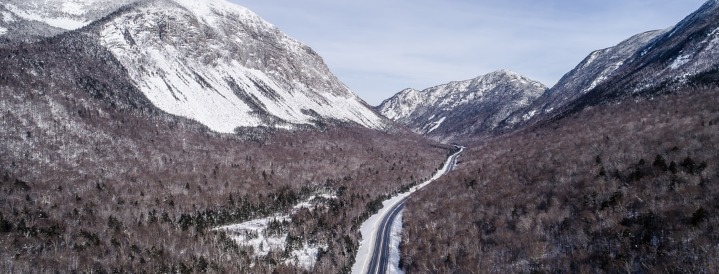
Heading further west on I-4, you’ll find the tall mountains of Killington and the city of Rutland. From here, enjoy the ride up I-7 north to Burlington and the views of the massive Lake Champlain, which is shared with Canada, or head south to the small towns and rolling hills of Massachusetts Berkshires.
What’s cool: Quaint towns and babbling brooks surrounded by the lush Green Mountains.
Massachusetts
The central hub of New England and plenty to see on your road trip!
The scenery of Massachusetts will definitely not bore you, because it changes in a short drive. Starting on the Mass Pike I-90, visit the Berkshires of the western end of the state. Historic Lee, Lenox, Williamstown, and North Adams are all gems worth the short trip.
A short drive east will bring you to the city of Boston, New England’s largest city and economic center. Besides having an enormous history, Boston boasts many activities like the Boston Harbor Islands, the Museum of Fine Arts, the Museum of Science, the New England Aquarium, and many fine restaurants.
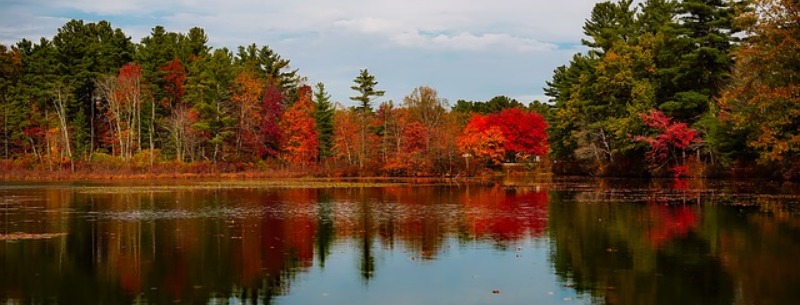
South of Boston are some of the most famous and enjoyed beaches in the country on Cape Cod. This large peninsula is a long 100+ mile drive from one end to the other, but very worth it. A stroll along the busy canal is memorable and a great way to start your Cape trip. The coastal towns of Falmouth, Chatham, Dennis, Truro, and Provincetown are some of the better-known areas with amazing beaches and sites. In Nauset, be sure to visit the sprawling dunes of the Cape Cod National Seashore. If you’re really adventurous, take a ferry ride to Nantucket or Martha’s Vineyard, easily accessible from Hyannis, Harwichport, and Wood’s Hole.
Rhode Island
A small state with plenty of road trip vistas and history!
Just a short drive from Massachusetts is Newport, Rhode Island–just a little over an hour away with no traffic. Clifftop mansions dot the rocky shoreline of this historic community that has been owned by families like the Vanderbilts and Rockefellers. To the north is the capital of Providence, a small city with prestigious schools and must-see walking trips.
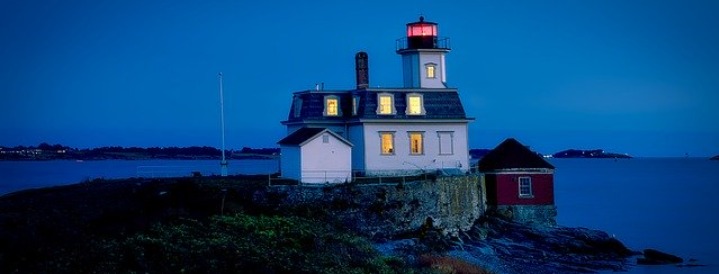
What’s cool: Visit the entire state in just one day! It’s so small, yet so beautiful.
Connecticut
Historic harbors, cities, and coastal beauty
The I-95 corridor of Connecticut carries the brunt of the well-known the state is known for. Cities like New Haven, Bridgeport, Greenwich, Old Lyme, Mystic and Old Saybrook provide gorgeous views of Long Island Sound. Further inland, you can find the capital of Hartford. A beautiful scenic ride up I-91 from New Haven will lead directly onto the Mass Pike.
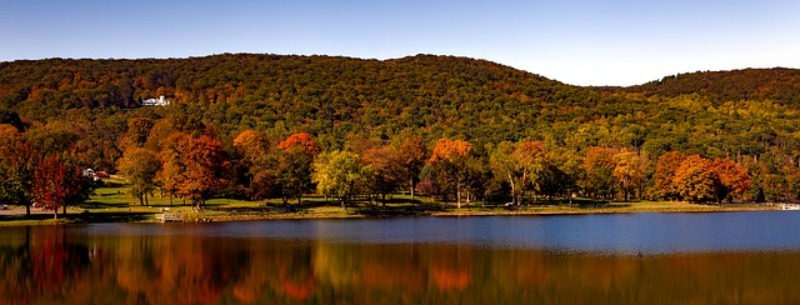
What’s cool: Beautiful marshes, historic villages, and active coastal harbors make Connecticut a memorable seaside destination.
Manhattan
Ready to brave the confusion of Manhattan’s city streets?
The small communities of Connecticut slowly get bigger as you travel down I-95 towards New York City. Multiple routes can be taken to get into the city, or if you prefer to avoid it, pass quickly through it by staying on I-95 to New Jersey.
Manhattan is divided roughly into 3 regions: uptown, downtown, and midtown. 5th Avenue cuts across the middle and acts as an east/west side divider. These sections are further divided into neighborhoods like Soho, Tribeca, Little Italy, Chinatown, Hell’s Kitchen, Times Square, Greenwich Village, Lower Manhattan, and many more. The best way to get around Manhattan is by foot, subway, or taxi. Parking here is expensive, and driving around town can be stressful if you are not experienced driving in NYC. Taking a cab or other means of transportation is highly recommended!
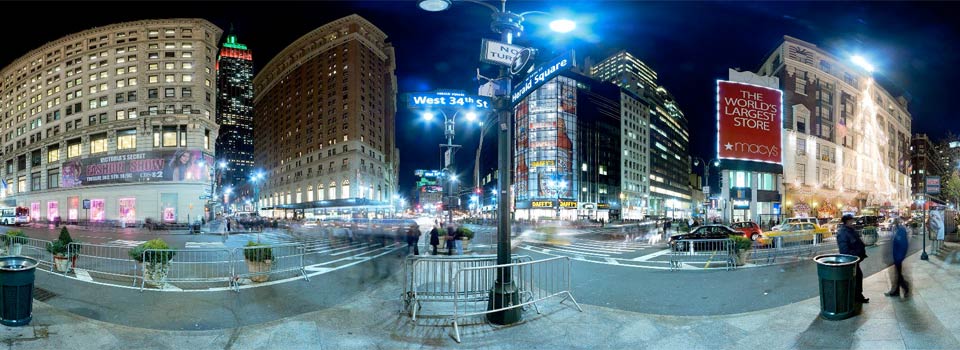
What’s cool: Huge skyscrapers, foods from around the world, people from around the world, and famous sites like the Empire State Building, Times Square, and Rockefeller Center.
Endless things to do and find in such a small space will never leave you bored.
New York State
Beautiful lakes, countryside, rivers, and the Adirondacks
It should be no surprise that New York City is one of the most visited international destinations and the United States’ biggest city. A sharp contrast to the fast-paced metropolis lies only a few miles from the city. Upon leaving the city, a beautiful riverscape is apparent, with high mountain banks and beautiful bridges. Side roads along the Hudson River such as I-9 and the nearby Taconic Parkway provide gorgeous views of the state. This region is also home to the largest state park in the country, Adirondack Park. Further upstate, the Adirondack Mountains decorate the scenery of Lake Champlain. To the west, rolling farmlands span to the Finger Lakes region and famous Niagara Falls and the Great Lakes region.
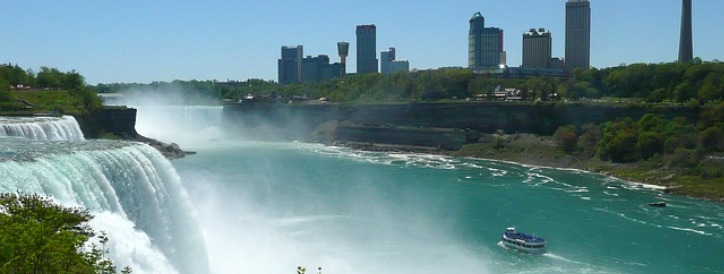
What’s cool: The famous Niagara Falls will not disappoint in wonder but don’t forget the Hudson River Valley’s natural beauty as well.
New Jersey
Take a road trip to the rolling dunes of the Jersey Shore!
According to Wikipedia, New Jersey is at the epicenter of the “BosWash” megalopolis–a term used for the large, continuous city environment that is prevalent from the Washington DC area to Boston. As a middle ground between the huge cities of Philadelphia and New York City, it is largely a suburban home for commuters to the cities.
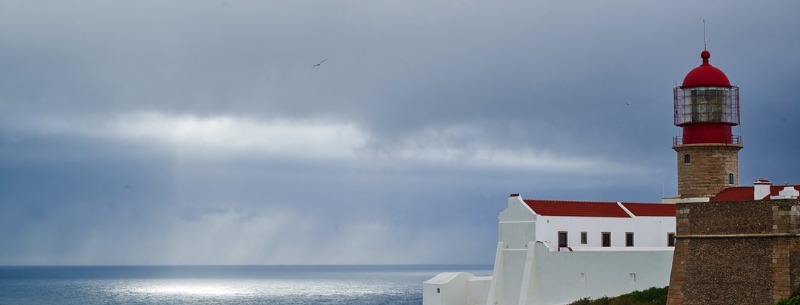
The shores of Jersey provide beautiful sandy beaches, marshes and inlets. Many towns like Ocean City provide seaside boardwalks lined with restaurants and shops, while quieter communities like Cape May are a serene alternative. At the end of the peninsula lies the Delaware River and the state of Delaware only a quick ferry ride away.
What’s cool: Outstanding beaches and boardwalk communities that you’ll never forget.
Pennsylvania
Remote farmlands and Colonial-era charm in Pennsylvania
The social and ecological differences in Pennsylvania cover a large gamut. To the northwest lies the Ponoco Mountain region, a New York City retreat, the industrial Great Lakes region near Erie to the northeast, the classic Amish region to the south, the large city of Pittsburgh to the southwest, and the gigantic historical city of Philadelphia to the southeast. Philadelphia draws many tourists for its historic Liberty Bell and Independence Hall, which are only a short drive from New Jersey. You can easily find Philadelphia off I-95.
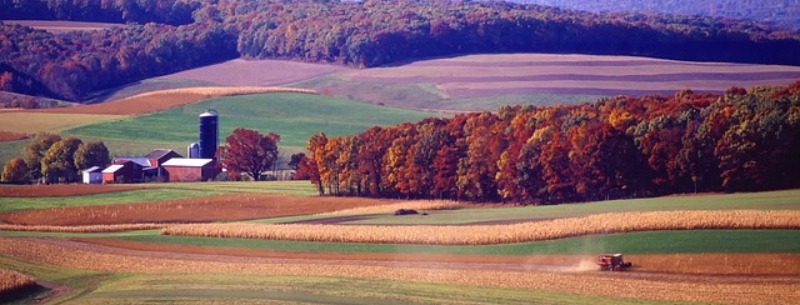
What’s cool: Stark contrast in regions and cool history in Philadelphia like the cracked Liberty Bell or nearby Gettysburg Battlefield.
Ohio
The heart and soul of America in the Ohio River Valley
Home to the cities of Cleveland, Toledo, Cincinnati, Columbus, and Dayton, as well as over 11 million people, Ohio, is one of the most populous states in the country. Ohio lies right on Lake Erie, with hundreds of miles of recreational coastline.
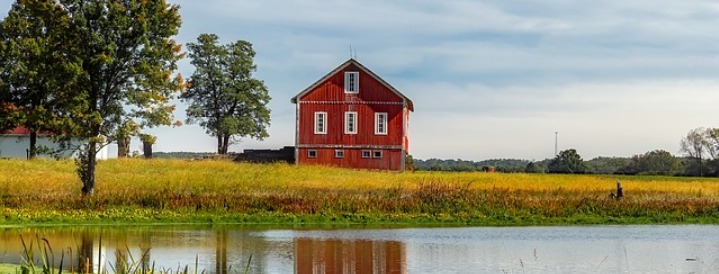
Along I-90, Cleveland is easily accessible from the New York state region and will be right along the northern route of your road trip.
What’s cool: The Rock and Roll Hall of Fame in Cleveland is an easy on-off stop for your trip.
Michigan
Visit the “third coast” of the United States in Michigan!
A well-kept secret in Michigan is that it actually has fantastic scenery on its long shoreline. Michigan consists of two peninsulas, the upper and lower. The Mackinac Bridge, a 5-mile long suspension bridge, connects the two peninsulas across the narrows of Lake Michigan and Lake Huron. High palisade cliffs, tumbling waves, pine-covered coastline, and high dunes cover the beautiful coasts here. For some peace and quiet, head to Isle Royale National Park, Sleeping Bear Dunes, or Pictured Rocks National Seashore.
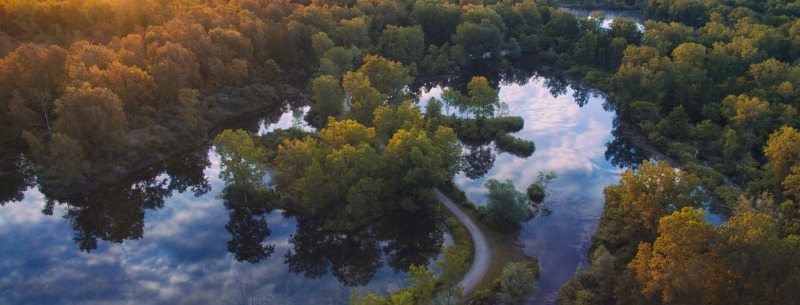
What’s cool: The “third coast” Great Lakes area of Michigan has 115 lighthouses! That’s way more than most Atlantic states.
Illinois
Illinois is the cultural and economic epicenter of the Midwestern region. Endless prairies and farms surround the suburban area of Chicago, the 3rd largest city in the country. Chicago lies directly on Lake Michigan and the Chicago and Illinois rivers, providing unique water views all around the city. Some of the tallest skyscrapers in the world can be found in Chicago, such as the John Hancock Center and Sears Tower. In the city, you can find attractions such as Lincoln Park, which is similar to Central Park, the “Magnificent Mile” of shopping, Second City comedy troupe, and plenty of amazing local food.
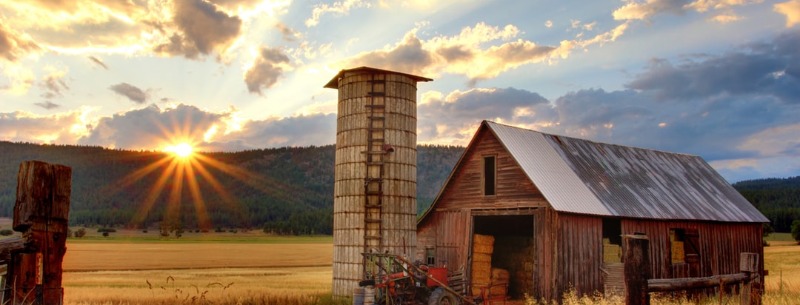
What’s cool: A trip to the top of the Hancock Center a the observatory provides an unmatched view of Lake Michigan, Chicago, and several different states.
South Dakota
You may think that South Dakota has little to see, but they’re really are plenty of interesting sites to see. Upon entering the state, you will proceed through Sioux Falls. Gas up and get lunch here, there’s not much else for quite a drive.
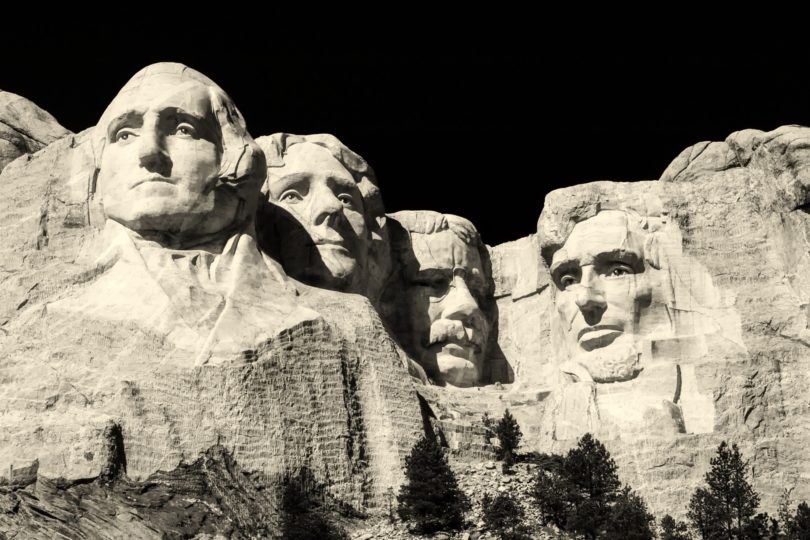
Driving across the open plains will bring you to the Badlands in the western part of the state. At its most impressive is Badlands National Park. A large collection of fossils have been found in this region of twisted spires and sandy red buttes. If you visit Wind Cave National Park in the southwest of North Dakota, you may come across one of the nation’s only free-roaming bison herds. Wind Cave is the 4th longest cave in the world at 125 miles! Temperatures can shift seasonally in South Dakota from extremely cold winter temperatures to summertime highs often reaching or near 100 degrees!
Further west on I-90, you will find the Black Hills region and famous Mt. Rushmore. This famous mountain sculpture is a huge attraction (2 million annual visitors!) and a beautiful National Memorial. Continuing west on I-90 will bring you directly into the state of Wyoming.
What’s cool: A surprising number of National Parks in a small area like Badlands, Wind Cave, and Mount Rushmore that are impressive and easy to get to.
North Dakota
While not on the direct route of I-90, North Dakota offers another quiet plains environment. Coal mines and oil help drive the economy of this northern state. The largest city in the state, Fargo, is located on the eastern border near Minnesota. Much of the southwest of the state is continuous badlands like South Dakota. In this region lies Theodore Roosevelt National Park, a badlands-filled area with numerous wildlife that can be easily viewed due to the openness of the area. In the middle of the state is Lake Sakakawea and the Missouri River.
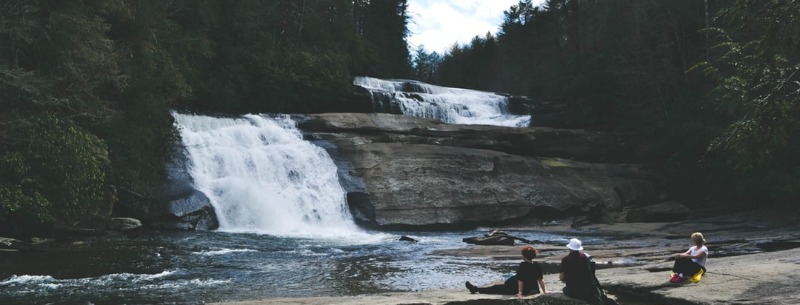
What’s cool: Theodore Roosevelt National Park is one of the most remote National Parks outside of Alaska and would make an excellent choice for camping!
Wyoming
Half high plains and the half Rocky Mountains, Wyoming has amazing sites in its 97,000+ square miles. Besides the famous mountain ranges to the west (the Teton range), lesser-known high ranges like Owl Creek, Big Horn Mountains, and the Black Hills provide beautiful vistas.
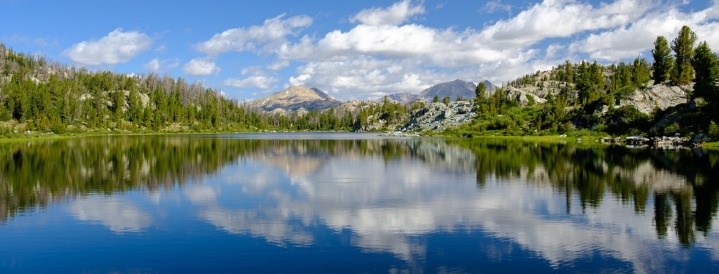
In the middle of the state on I-90, you will reach the Continental Divide. Great Plains suddenly becoming the towering Rockies in a dramatic drive over the highways. On the eastern edge of the state, Devils Tower is an impressive National Monument in the Black Hills region. Not only is the towering butte memorable, but the surrounding area has a huge colony of prairie dogs and other wildlife. Back to the west, the country’s prized Yellowstone National Park is part of Wyoming you will want to spend a few days at. Right around the corner is Grand Tetons National Park and the town of Jackson, Wyoming.
What’s cool: Some of the best sightseeing for road trips in the United States, yet the roads are never busy.
Idaho
Snow-covered mountaintops, canyons, and plains cover the scenic state of Idaho. The largest city, Boise, is a beautiful capital. Craters of the Moon National Monument and City of Rocks National Reserve are interesting areas to visit in the state.
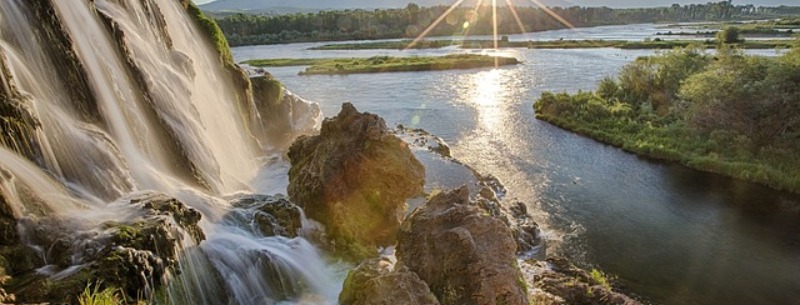
What’s cool: Hells Canyon–a wide, steep canyon carved by the Snake River is a surprising treat in this area.
Oregon
Oregon is a calm, beautiful, and eclectic Pacific state. Large cities like Portland and Salem are blessed with amazing mountain backdrops and gorgeous beaches. Thick, tall forests meet with the ocean climate on beaches like Cannon Beach, Rockaway Beach, and Depoe Bay. Here, the I-101 provides views similar to that of California’s Big Sur and Pacific Highway 1. On the interior of the state lies Crater Lake National Park. A sunken volcano caldera formed this lake thousands of years ago, contrary to the namesake.
Washington
Washington state may have the unfortunate rumor attached to it due to its cloudy weather, but the rain is mostly a myth. Snow rarely falls in the Pacific Northwest, except for the high mountains. A slightly higher than the average number of cloudy days and rainforest climate may contribute to this myth.
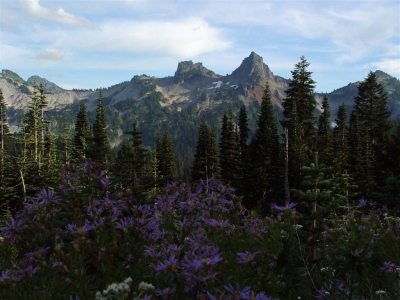
On the Olympic Peninsula of Washington lies Olympic National Park, a beautiful area that is complete with its own rainforest (the Hoh Rain Forest). Rough, craggy beaches like Rialto Beach provide a spectacular view, with abundant wildlife and sightseeing.
Further inland lies the city of Seattle, a city that lies directly on Puget Sound. Cool places to see are Pike Place Market and the now-classic Space Needle. In some areas, Mt. Rainier can be viewed directly from the city. Nearby Mount Rainier National Park is known for its high descent, unbelievable floral wildflower display, and glacier-covered peak.
To the north lies North Cascades National Park. This park has an incredible group of sightseeing opportunities. From the tall waterfalls like Rainbow Falls, hundreds of glaciers, unique wildlife like black bears, gray wolves, and bald eagles, and turquoise-colored glacier lakes like Diablo Lake, you could fill an entire memory card on your digital camera in just one day.
What’s cool: If you like coffee, Seattle is your town. Birthplace of big chain cafes like “Starbucks” and “Seattle’s Best,” and home of local favorites like “Trabant Coffee & Chai” and “Cafe Darclee.”
Quick Directions Across the North
Here are some easy, quick directions across the northern portion of the country, hitting many national parks, state parks, coastlines, attractions, and cities. We’ll start off in Maine…
- Starting at West Quoddy Head at the Canadian border, you’ll be on Interstate 1. This road travels the entire coastline of Maine. Follow Route 1 south approximately 95 miles south to Mount Desert Island. In the town of Ellsworth, take I-3 south down the peninsula to Acadia National Park.
- After visiting Acadia, travel north back up I-3 to I-1 (Acadia National Highway). Follow this beautiful highway south all the way to the town of Brunswick, Maine, and merge onto I-95 south towards Portland.
- Once in Portland, the White Mountains of New Hampshire are your next stop. Travel north up I-302 65 miles towards North Conway. You will pass by Mount Washington on this route. From North Conway, travel south on Highway 16 to Highway 112, the Kancamagus Highway.
- From the end of Highway 112 in Lincoln, enter I-93 north. A few miles north is Franconia Notch State Park. From here, travel back south on I-93 for 19 miles to Plymouth, New Hampshire. Take Exit 26 towards Rt. 25, then Route 118 towards I-89 north. Follow I-89 north to the I-4 exit in White River Junction.
- On I-4, you will quickly reach Vermont and the Queechee area. Follow I-4 to the town of Woodstock and through the Killington peak area. I-4 will merge with I-7 at Rutland.
- Traveling up I-7 will bring you to beautiful Lake Champlain. A ferry ride across or a quick drive around the lake will lead to New York state. I-2 will drive across the islands of Lake Champlain and along the border of Canada, into New York state. I-2 will merge with New York I-87. Take this road south to the Adirondack region.
- I-87 south will travel along with breathtaking Adirondack scenery and parks. South to Albany, you will find I-90. Take I-90 east towards Massachusetts and the Berkshire region.
- On I-90 (the Mass Pike), take I-7 north towards the country towns of Lenox, Lee, Williamstown, and North Adams. In Williamstown, take I-2 east towards North Adams. This is the scenic Mohawk Trail. Follow for about 35 miles to I-91 in Greenfield south to the Springfield area and I-90 (the Mass Pike) east.
- Follow I-90 east to Boston, an approximately 90-mile drive. From Boston, you can take I-93 south to Braintree. Take Rt 3 south approximately 25 miles south to historic Plymouth and Cape Cod. Rt 3 will become Rt 6 once crossing the Sagamore Bridge. Follow Rt 6 to Cape Cod destinations like Chatham, Hyannis, Provincetown, and Truro.
- Follow Rt 6 back all the way back across the Sagamore Bridge to Rt 6 west alongside the Cape Cod Canal. Follow this road to Rt. 25, which will become I-495. Take I-195 West towards New Bedford and Fall River approximately 24 miles.
- From the Fall River area, take Rt 24 south to Rhode Island. 24 will become Rt 114. Follow this road all the way to Newport, Rhode Island.
- From Newport, take Rt 138 across the Newport Claiborne Pell Bridge, then across the Jamestown Bridge. Continue along 138 towards I-95 south. I-95 south will bring you to Mystic, Connecticut.
- Manhattan is approximately 125 miles to the south of Mystic on I-95. I-278 south will bring you directly towards Manhattan. From the Holland Tunnel or over the George Washington Bridge, you will find the state of New Jersey.
- At this point in the trip, you can either head north along I-87 towards the Hudson River Valley or south on I-95 towards Philadelphia. A fun side-trip is Cape May, New Jersey, on the very end of the peninsula. To reach Cape May, follow I-95 south towards I-9 and the Garden State Parkway. The Garden State Parkway leads directly to Cape May, a 3-hour drive.
- To reach Philadelphia, travel north on the Garden State Parkway to the Atlantic City Expressway. This expressway will merge with Rt 42 north towards I-76 and I-676.
- Philadelphia is about 6 hours from Niagara Falls, New York. Follow I-76 west towards I-476 north. In Scranton, take I-81 through New York State towards Syracuse. Follow I-90 West towards Niagara Falls and Buffalo. I-290 and I-190 will take you directly to the falls.
- Cleveland is an easy 3-hour drive south along I-90. From here, you can decide to take the trek up the Michigan peninsula, or towards Chicago. Of course, you can do both! To reach Chicago, stay on I-90 west for about 5 hours.
- 90 minutes to the north of Chicago is Milwaukee. Take I-94 north towards this city in Wisconsin. I-94 will lead directly towards Minneapolis. From here, take I-90 West towards the Wisconsin Dells.
- The plains area is a nice scenic drive, with rural farmland, but can get redundant. Bring out the music for this portion of your trip along I-90 towards South Dakota and the Badlands.
- After a 10 hour drive, you will reach South Dakota’s Badlands National Park, Mount Rushmore, and Wind Cave National Park.
- Follow I-90 west to Wyoming towards Devil’s Tower National Monument. I-14 north will lead directly to Devil’s Tower. An approximate 8-hour drive across Wyoming’s backcountry will lead to Yellowstone National Park. Take I-14 back south towards I-90. I-90 west will lead to I-14 in Rachester, Wyoming. Take I-14 south towards Cody, Wyoming, and Yellowstone National Park.
- From Yellowstone, travel south to I-191 to the Grand Tetons National Park and Jackson, Wyoming. In Jackson, I-26 will lead directly to Idaho Falls, Idaho. From here, I-15 south will lead to I-86 west. This will merge to I-84 west to Boise, Idaho.
- I-84 west will lead directly towards Washington State. Take I-82 north across the state towards Seattle. From Seattle, follow 104 towards Olympic National Park. I-101 will lead to most of the attractions of the park.
- Follow I-101 to the coast of Oregon and enjoy the seaside vistas.
